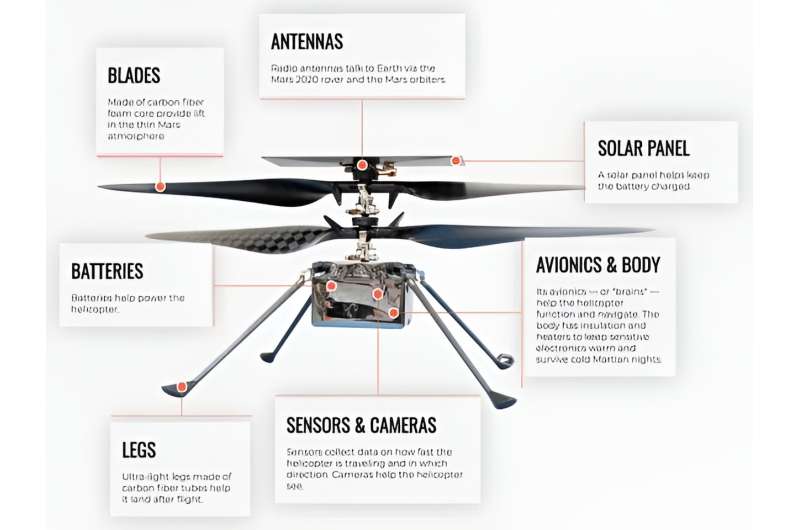In observations from the Mars rovers and orbital spacecraft, some regions appear to have been influenced by water while some have not.
"Up to last decade, we thought that magmatic rocks were only basaltic on Mars," said Valerie Payré from the University of Iowa, the paper's lead author. "But with recent rover and orbital measurements, we observed that there is a wide diversity of magmatic rocks similar to what we see on Earth."
Payré explained via email that there are rocks on Mars with elevated silica concentrations called felsic rocks—feldspar and silicate—that are rich in elements and were not expected to be found on the Martian surface.
"We measured these with the Curiosity rover and have some hints of where there might be others using orbital measurements," Payré said. "However, close-up images (millimetric scale) and composition analyses are lacking from the orbital dataset to know if these felsic rocks are widespread on Mars or just at a few locations. This is yet highly important to understand what the crust of Mars is made of and if it is similar to Earth's crust, which has implications regarding the formation of the planet and even past climate."
Payré and her team feel that a helicopter would be perfect to explore places where a rover could never traverse, such as terrains that are too high in altitude, since landing there would require too much fuel.
The instruments they propose include a miniaturized visible and near-infrared (VNIR) spectrometer for small scale mineralogical mapping and a small Laser Induced Breakdown Spectrometer (LIBS) with a micro-imager, an instrument similar to the ChemCam laser instrument on both the Curiosity and Perseverance rovers. In their paper, the team writes that a helicopter with these instruments could travel kilometers to detect promising felsic terrains, and measure their composition at a micron scale.
"We could fly over these possible felsic terrains and look at their minerals using a visible/near infrared spectrometer, land on locations of interest, take close-up images, and measure the compositions of these rocks with the LIBS," Payré said. "We could finally know what Mars' crust is, and better constrain how it formed."

There could also be an onboard a magnetometer, which measures magnetic field anomalies, to better understand how Mars' magnetic field operated, which is still uncertain. Mars does not presently have a global magnetic field, but had one early in its lifetime.
"Such payload would finally enable us to better understand the past climate on Mars by measuring the composition and minerals of sedimentary rocks of various age," Payré told Universe Today.
A conceptual design paper published in 2020 proposed a Mars hexacopter with a mass of about 31 kg (70 lbs) and a total diameter of just over 4 meters (13 feet). Each set of rotors would have blades about 0.64 meters (2 ft) long. The helicopter would be powered by a rechargeable solar cell. This would not only power the rotors, but the desired scientific instruments.
This helicopter could move as fast as 30 meters a second (60 mph) but also could hover over a spot for as long as five minutes. Engineers from Ames Research Center, the Jet Propulsion Lab and the University of Maryland wrote that MSH could fly with a range of up to 10 km (6.2 miles) per flight. With this speed and range, MSH could potentially cover as much ground in a few days as rovers like Perseverance and Curiosity have traversed in years.
"The fact that a helicopter can fly would facilitate the mission to visit to places that would be inaccessible for a rover, and we could access locations that we never imagined before," Payré said.
Payré and team proposed several landing sites including Gale Crater Gale crater where evolved felsic rocks were found by the Curiosity Rover; the massive canyon of Valles Marineris, where orbital observations have revealed a deep crust with feldspar-bearing rocks; and Hellas basin, 2,300 km impact crater known to have layers of feldspar.
More information: Paper: www.hou.usra.edu/meetings/lpsc2024/pdf/1215.pdf
Provided by Universe Today



